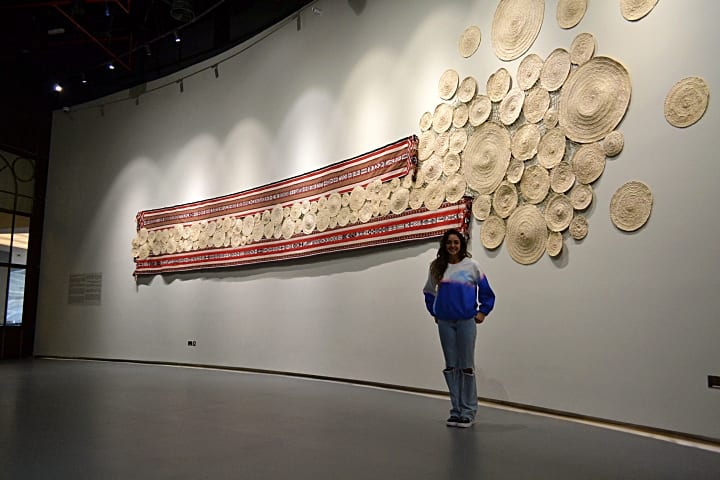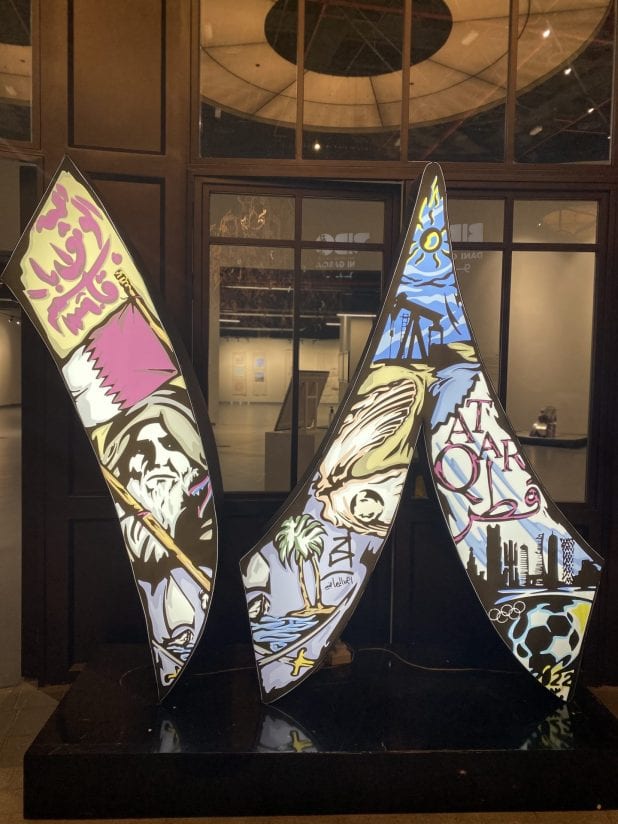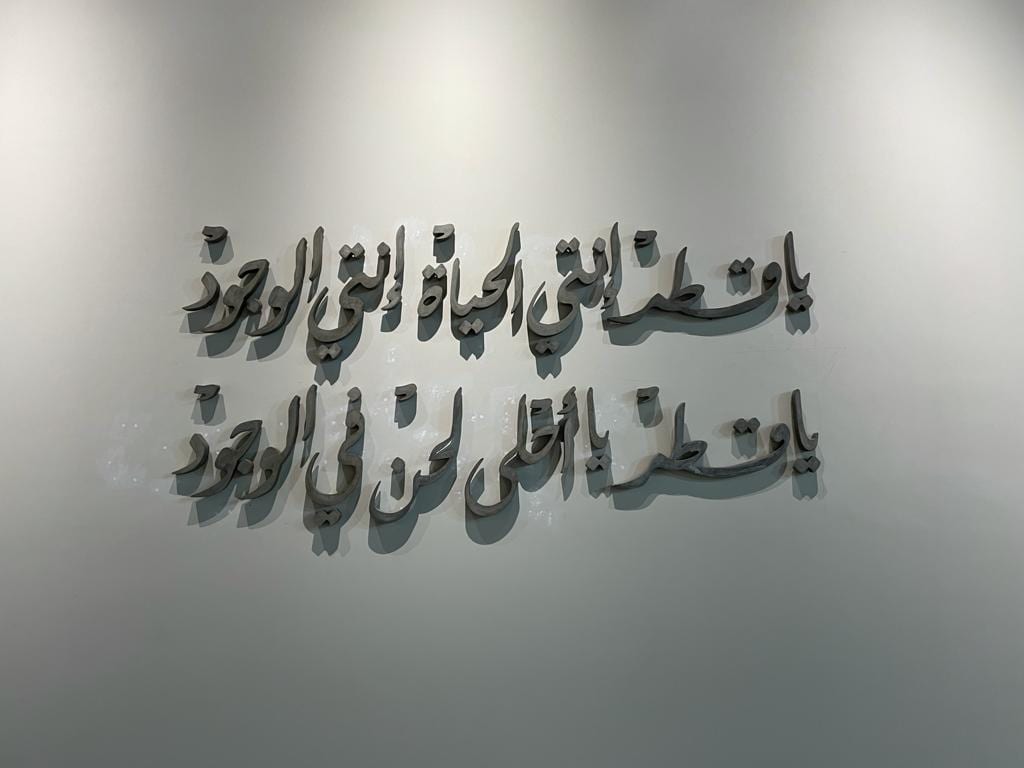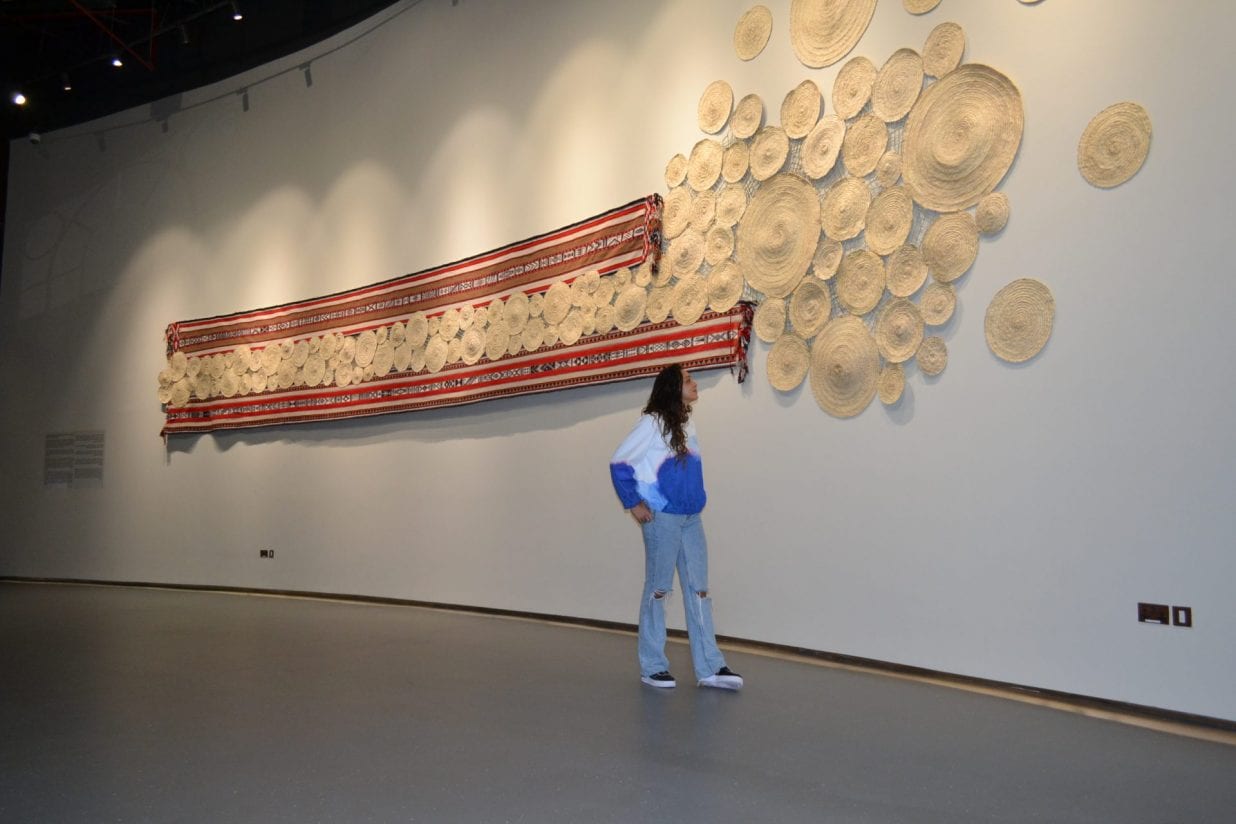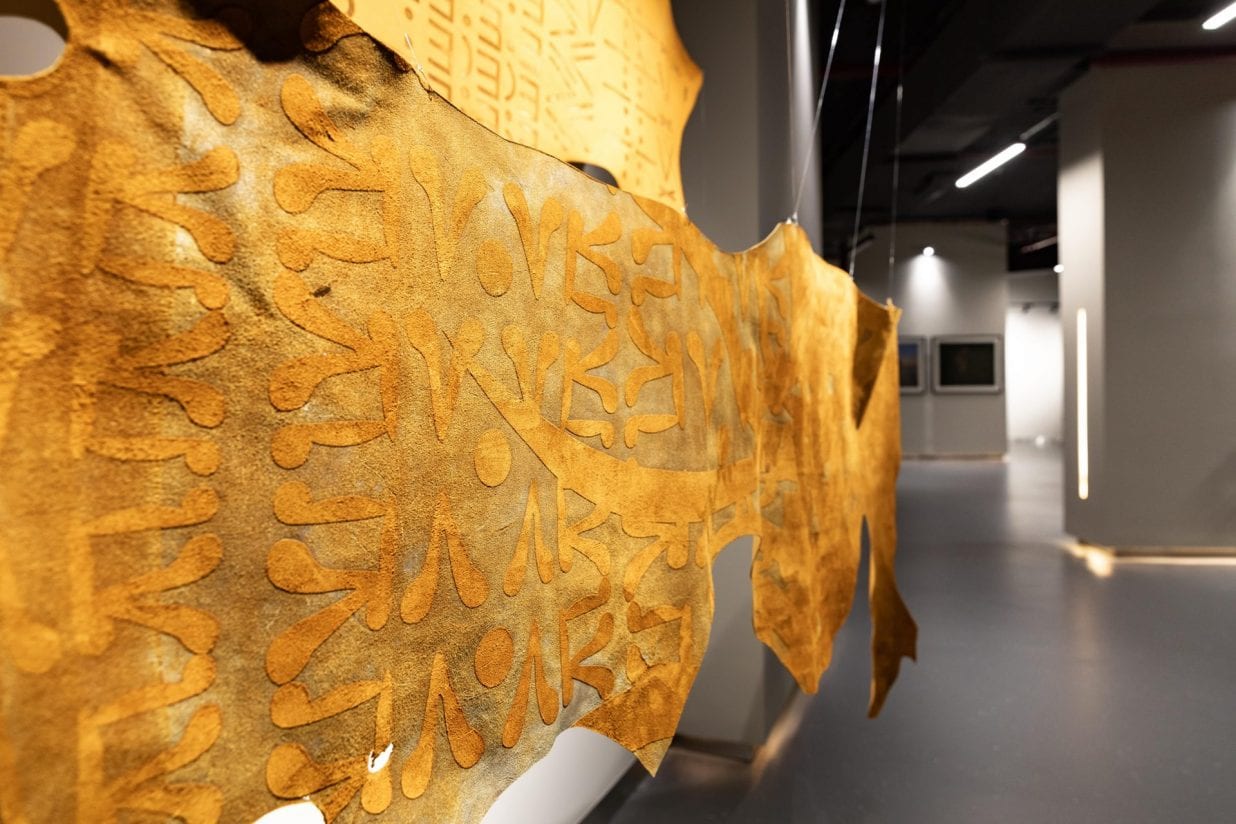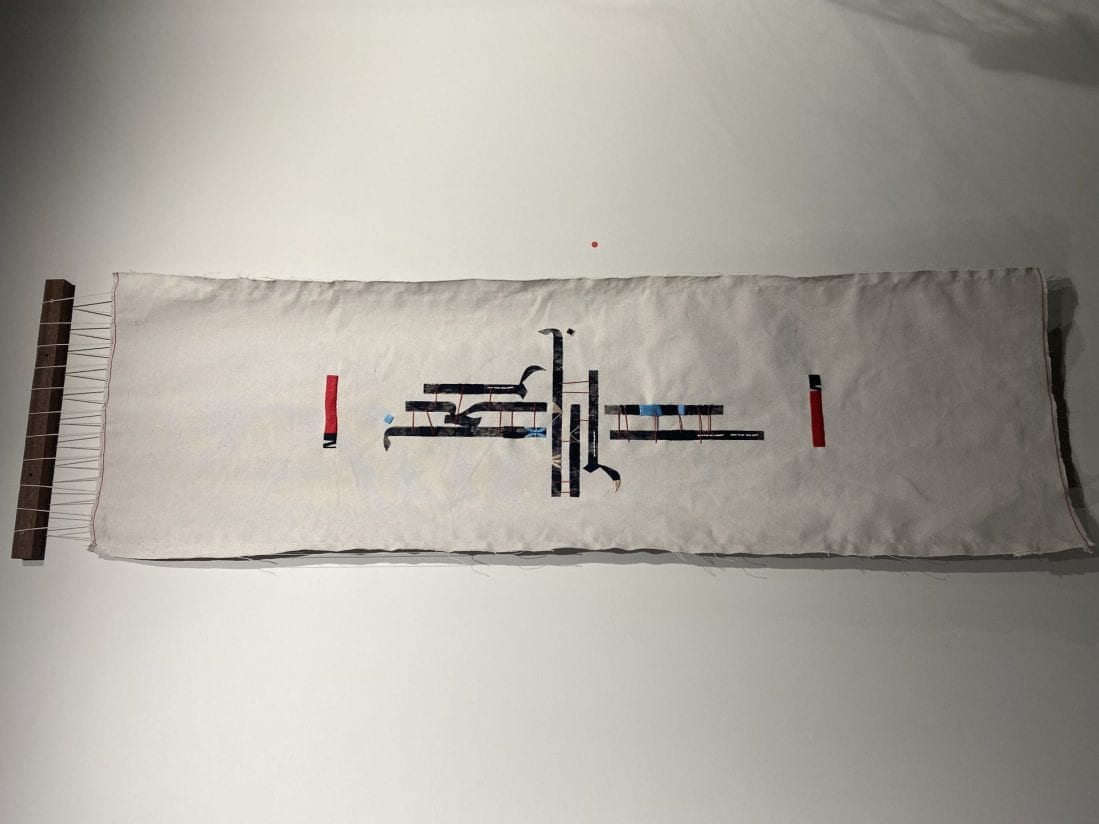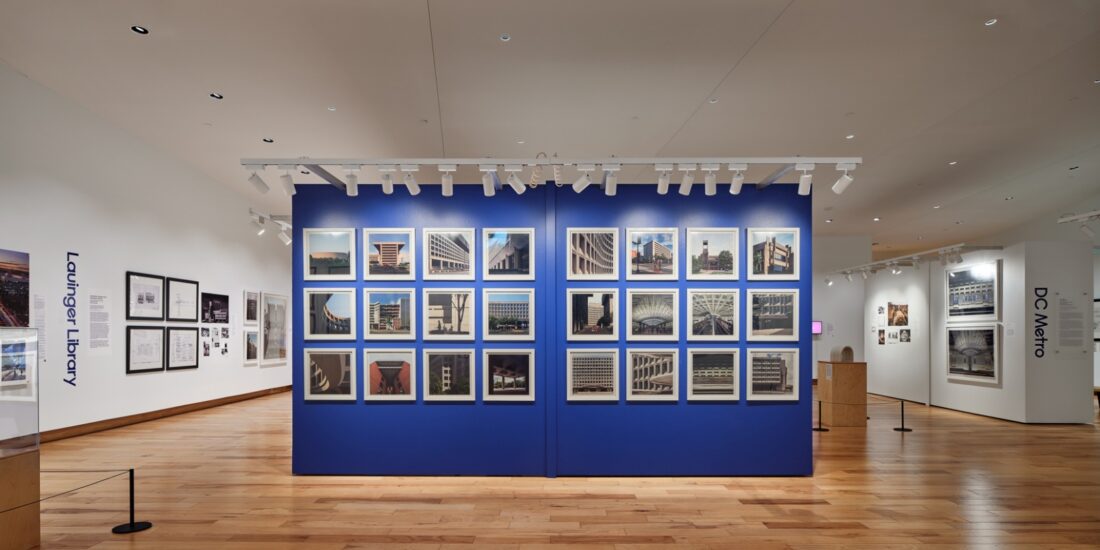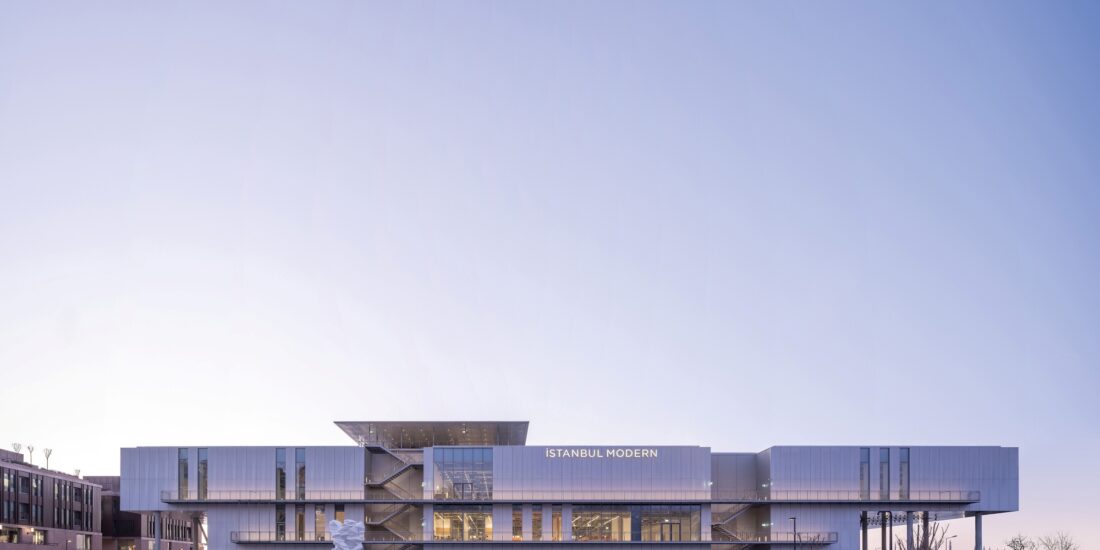Art to Celebrate the Country, its People and Past
Synergy is an ongoing exhibition at Eiwan Al Gassar Gallery that celebrates the country on the occasion of its National Day, with a curation of works that commemorate the history of the country.
Synergy is an exhibition that tackles nationalism differently and with insight, delving into the past and merging it with the present to celebrate and commemorate the achievements of a country. Started on December 16, 2020, the exhibition continues till January 23, 2021, and is curated by Asma Derouiche, Virginia Commonwealth University School of the Arts on Qatar (VCUarts Qatar) MFA in Design alumna, and Tariq Al Jaidah, who founded the Eiwan gallery in Al Gassar Resort.
The exhibition starts off with work from Ahmed Al Maadheed right at the entrance that emphasises on the date of the National day of Qatar through calligraphy and according to the artist also shines a light into the hope of the Vision 2030.
As one enters the huge exhibition space, the right wall is dedicated to a tribute to the late Qatari artist Abdul Aziz Nasser, through concrete Arabic calligraphy of his iconic song, “Ya Qatar anti-al Hayat, anti-al Wojoud (Ya Qatar, you are the life and you are the essence). A song that is representative of the country and a hymn loved by the citizens of Qatar which also immortalises the Qatari composer.
- Work by Fatima Al Shebani
The next artwork on display is by Fatima Al Shebani who uses stainless steel arrows that seem to pierce a glass wall, a work that is a representation of the blockade that has very recently been lifted. Named “The Glory Rises”, nine steel arrows that are similar to the nine arrows on the Qatari flags are engraved with poems of the founder of Qatar, Sheikh Jassim bin Muhammad Al Thani, and the arrows while on first glance seem to pierce the country, is actually bouncing back. An artistic representation of the blockade and the independence that the country sought and achieved during the trying times as it emerged victorious than ever before.

Contrasting the linearity of the Sadu with the geometry of the Safra, all made with locally and naturally available products in Qatar.
Yet the single most eye-catching piece of work is of curator Asma Derouiche’s that takes over the entire left wall. The work is eye-catching not just for the size, all of 13-by-3-metre but also for the story behind its inception and the traditions it has evoked.
“This work was made for this wall,” confirms Asma who is entranced by the materiality of products, “We have used the common material used during the olden times and tried to find connections between the old while giving it a new twist through evolution in design. Sadu is a technique of weave with wool that is common in the Middle East and the weave is mostly in a linear direction. The final product is always in these colours as these were the natural dyes available.
- Play of textures, effect of colours and the interweave od modern and traditional, are explored through these pieces.
“What I have explored here, along with the local weaver, is to contradict the linearity of the weave with Safra. Safra is made from locally available palm leaves and is used as plates, trays and mats. The circular shape is used to contradict the linearity of Sadu and the explosion at the end of comes with the message that this is the time to change for an explosion of new ideas that are initiated from the old.”
Asma has been working on the interplay of materials and old crafts found in the region while giving them a new direction with the modern techniques available and she intends to bring all her creations and inferences into play at her design house that is part of M7. But we will have to wait for that as it takes shape, she reveals.
The other exhibits play with the weave in different colours and bring into focus the various possibilities of an age-old traditional weave.

This is the beginning of Asma’s play with traditional weaves and crafts, she has more to explore and it will all be revealed through her association with M7.
“The craftsmen were very hesitant to try these new colours,” says Asma, “But they tried and the final outcome is these varied colours that demonstrate the versatility of the craft,” she says. Local craft masters Umm Atiq al-Marri and Mohamed al-Balkoum contributed to the artwork.
Wasms are an innovative way of declaring ownership of the halal, sheep, goats or camels to a certain owner through a unique design that is not replicated and here Asma has used the same design and laser printed it to form unique wall-hangings made of camel leather. Modern-day interpretations to an age-old custom signify Qatar’s journey from a cluster of tribes to the unified country that it is today.
Aerial photographs of the desert that we have not seen till now, by Assam Al Mannai, canvases that take us back to a nomadic lifestyle, form the rest of the display.
Asma loves to explore the resources available locally, and is excited with the new interpretations that each worker from different parts of the world who have made Doha their home, bring into a local material, “Putting their stamp into it and contributing to the new material”.
And this is what she will be doing as she explores local materials and their reinterpretation through various new techniques, finding a refreshed interpretation of Qatar’s heritage main theme of this exhibition along with celebrating the country is to find the deep-rooted connection between people from the bygone era, and those who live here now – their lives and livelihoods that is intertwined by the sea and the land.
The various local Uru or boat designs are also integrated into the exhibition as the curator finds the connection between sea and land, expat and national, tradition and global craft making, all of which makes present-day Qatar what it is.


